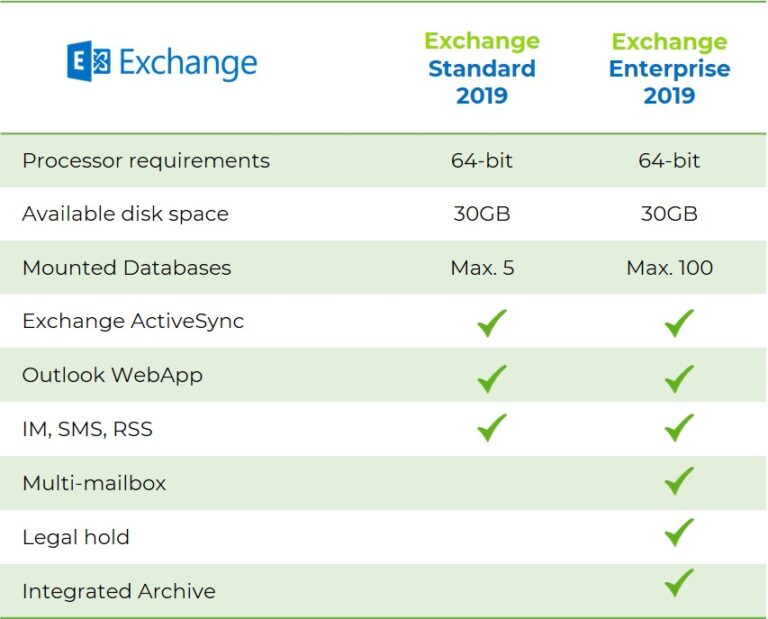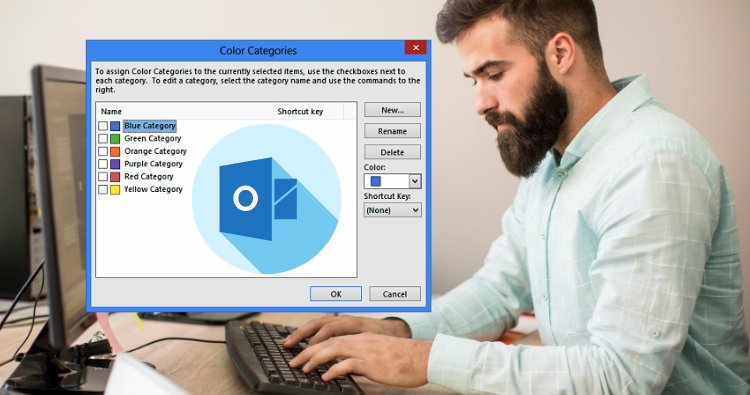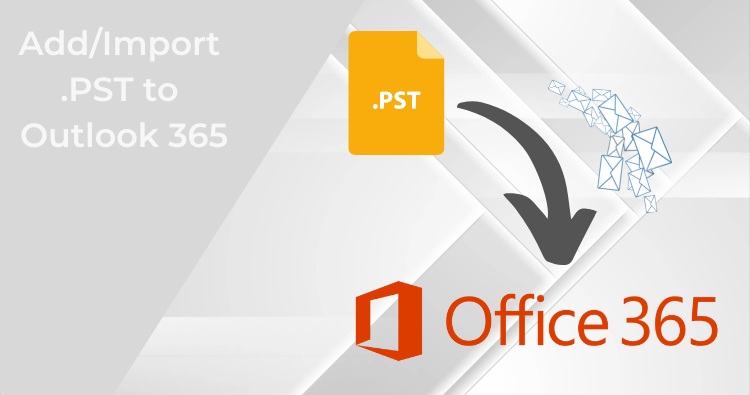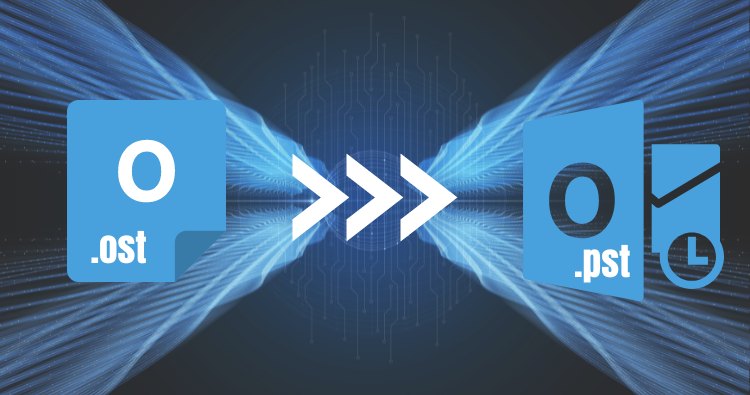Summary: Let’s find out which Exchange server edition is ideal for your organization, check the difference between Exchange Server 2019 standard vs Enterprise.
Currently, there are two server editions available for Exchange 2019 and 2016.
- Standard Edition
- Enterprise Edition
Standard Edition is limited to 5 mounted databases per server. In contrast, users can scale up to 100 mounted databases per server in the Enterprise server edition. Generally, small or medium size organizations use the standard Edition, and big organization uses Enterprise Edition.
An active mailbox database mounted for client usage or a passive mailbox mounted in recovery for log replication and replay are examples of mounted databases. While you can build more databases than the ones shown below, you can only mount as many databases as the Exchange edition permits. Keep in mind that the recovery database is not included in these restrictions.
Whether you seek Enterprise client access licenses (CALs) in addition to Standard CALs will determine other product features. Both Standard and Enterprise CALs can be used with any server version. However, to access certain Exchange Server capabilities, the Enterprise CALs must be used in tandem with Standard CALs. See the Licensing section below for further details.

Exchange Server 2016 requires 64-bit (x64) hardware (Intel EM64T or AMD64) for both versions, which uses memory and storage more effectively than 32-bit technology.
The main license requirements for Exchange Server are listed below:
You may execute one instance of the server software at a time in one physical or virtual operating system environment on the licensed server for each server software license you issue.
The Exchange Management Tools software may be used in any number of physical or virtual
operating system settings across any number of devices; only the server software may be used with such instances. Any instance of the server software may be used directly, indirectly, or through other software.
An exchange Server requires a server operating system since it is a server application, not a
server operating system. You also need a Windows Server license for every instance of Exchange Server.
Exchange Server 2019 standard vs Enterprise licenses
Licenses for Client Access (CALs)
Each device or user accessing or utilizing the server software needs an Exchange Server device or user CAL. Microsoft makes user and device CALs for Exchange Server available at Microsoft in both Standard and Enterprise versions. But you don’t need CALs: Only two individuals or devices may access the server software to manage those instances. Any person or thing that accesses your server software instances without first being directly or indirectly authenticated by Active Directory
Standard CALs
The Standard device or user CALs for Exchange Server allows one user or device to access Exchange Server for both the Standard and Enterprise versions.
Enterprise CALs
Both versions of the Exchange Server support the usage of enterprise CALs. Only Standard CALs and Enterprise CALs can access certain Exchange Server functionality. These functions include unified communications, in-place hold, integrated archiving, and data loss protection.
A product key identifies the different server editions. A valid product key establishes the server’s supported Edition when you input one.
Notes:
Exchange’s Trial Edition (evaluation version) may be upgraded to either Standard or Enterprise Edition with a legitimate product key. After the Trial Edition expires, there is no functional loss, allowing you to continue using Exchange in the lab, demo, training, and other non-production contexts without reinstalling or inputting a product key.
Utilizing a working product key to switch from Standard Edition to Enterprise Edition.
A working product key cannot be used to go from the Enterprise Edition to the Standard Edition or back to the Trial Edition. These downgrades can only be done by uninstalling Exchange, reinstalling Exchange, and using the right product key.




